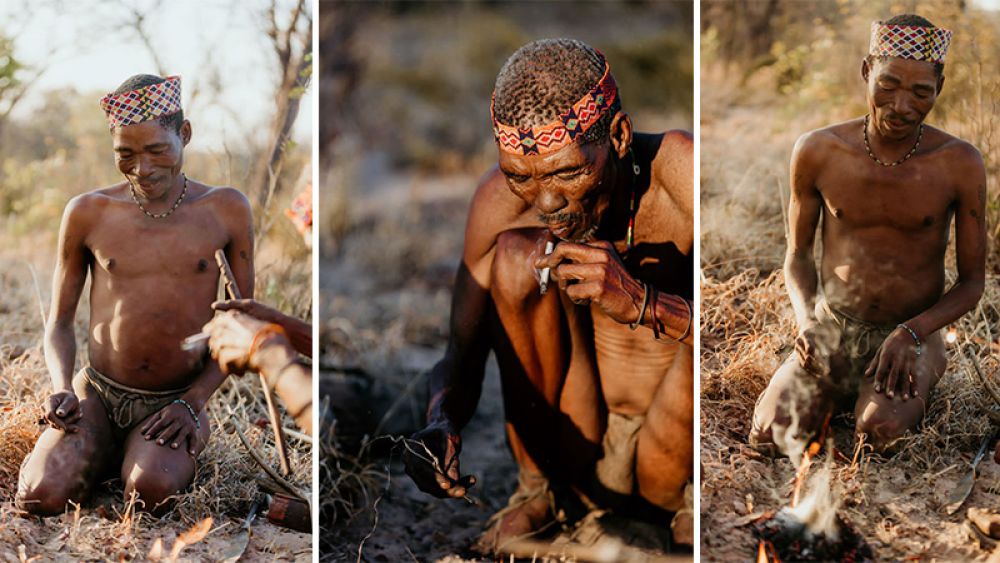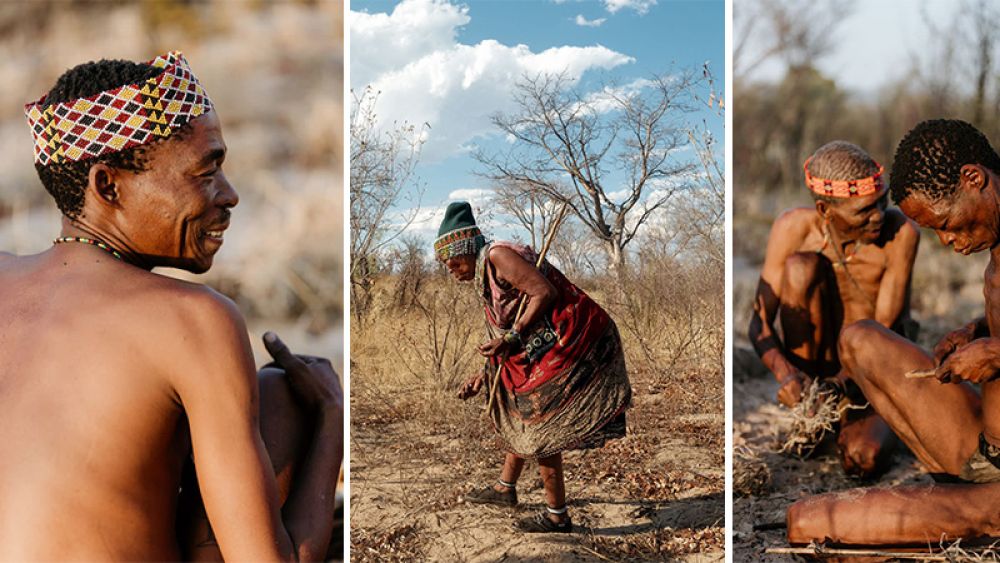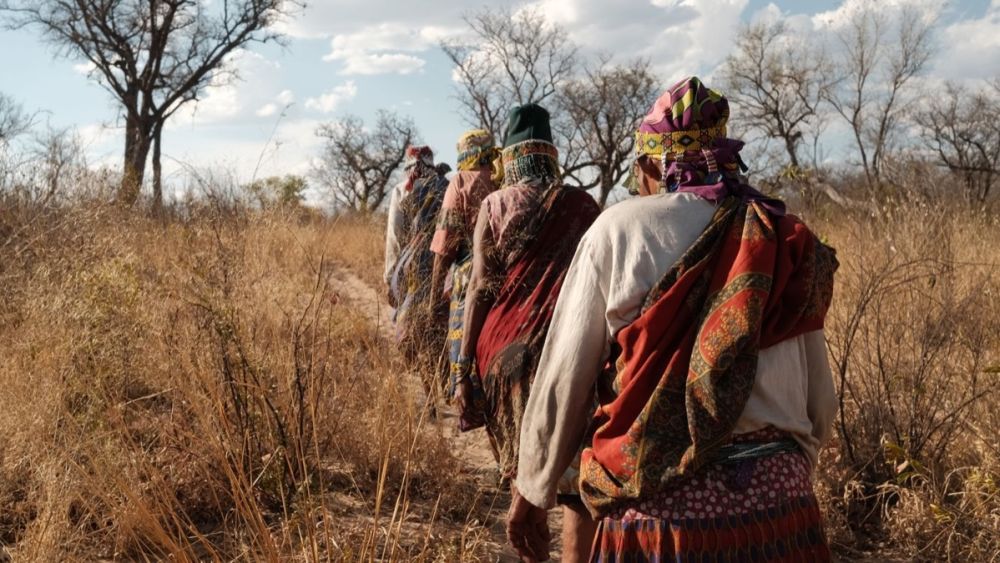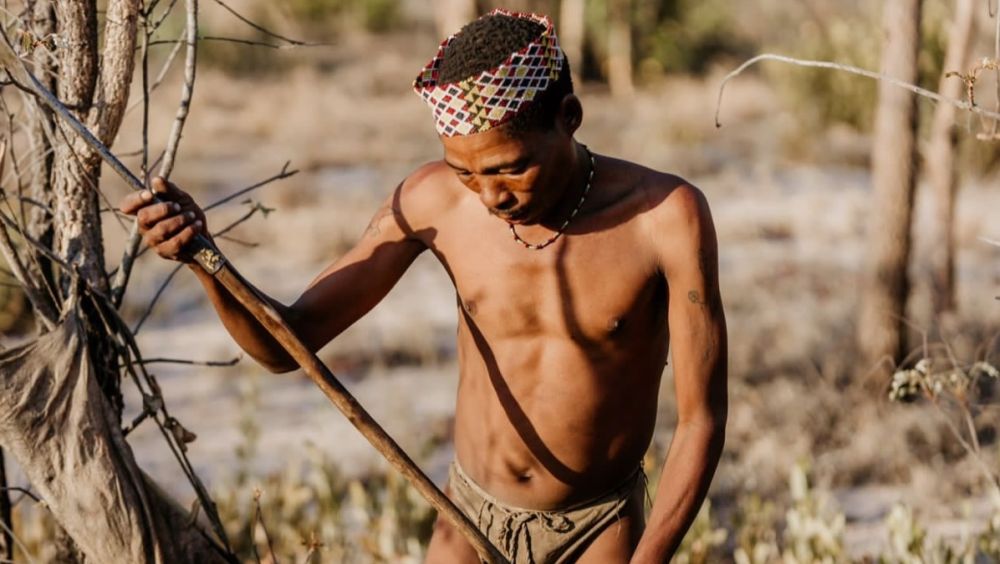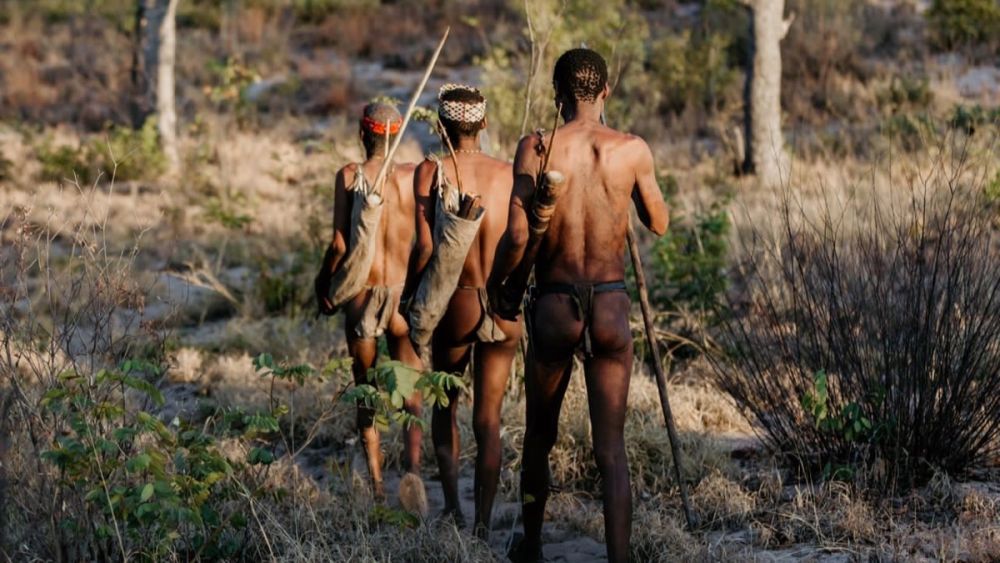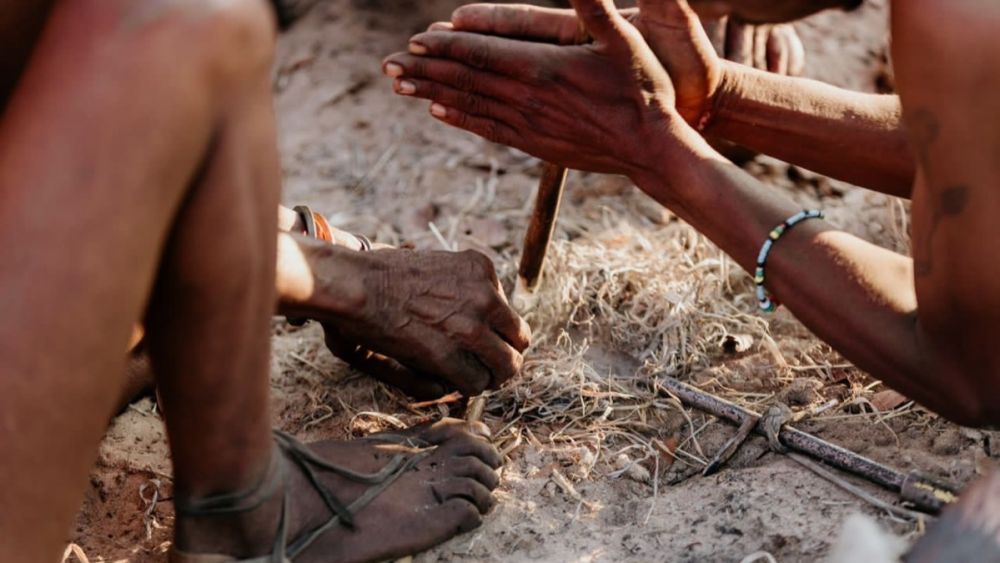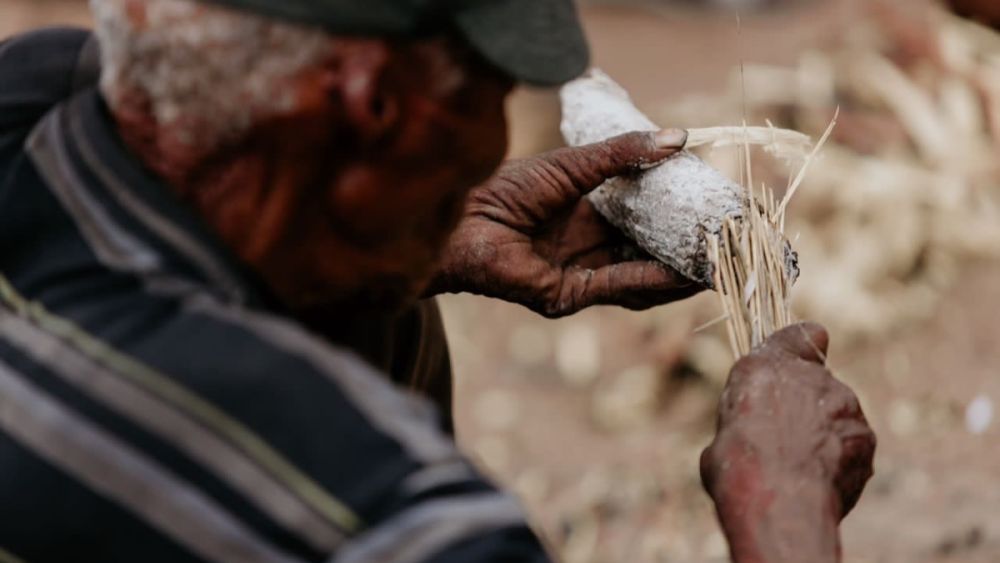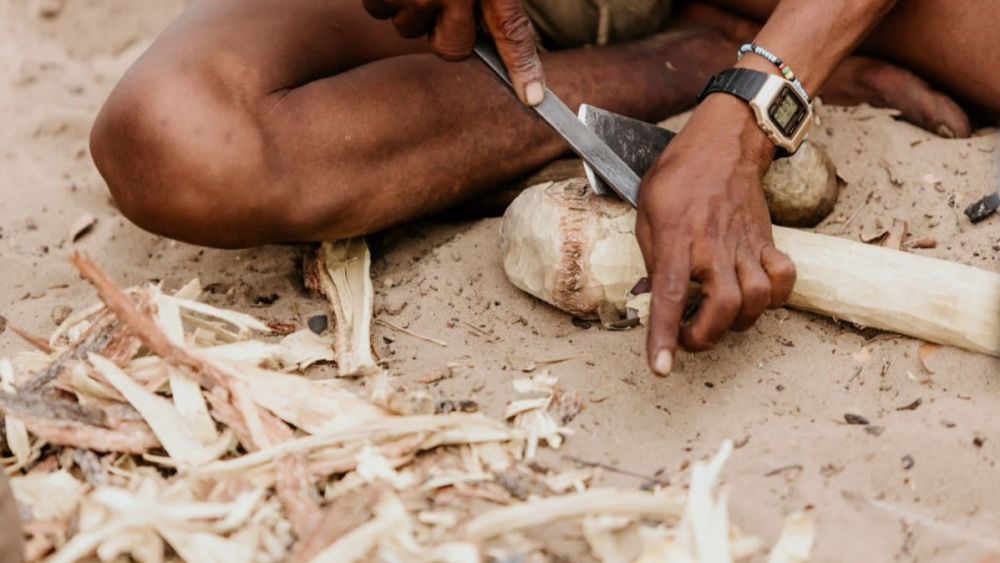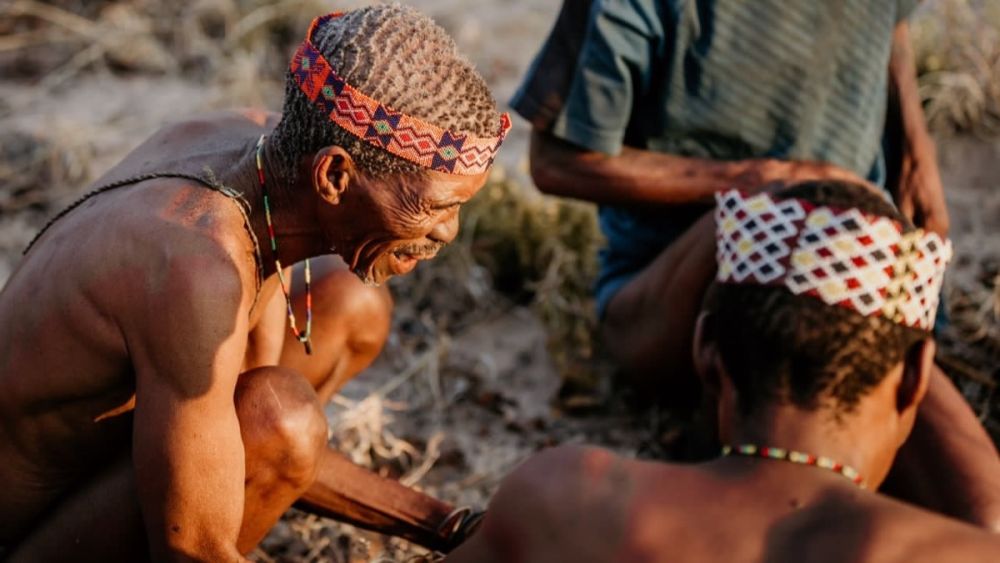Nhoma Bushmen Village
Activities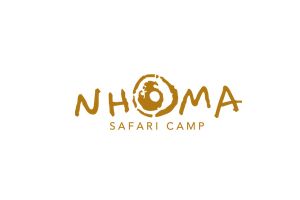
Meet the community in the village.
Your stay at Nhoma is centred around the interaction with the village. Activities depend on what individual people are doing, such as cooking, making Read more +
Meet the community in the village.
Your stay at Nhoma is centred around the interaction with the village. Activities depend on what individual people are doing, such as cooking, making crafts, preparing hides, making hunting equipment such as quivers or arrows. Traditional games and dances will also be played on one of the two afternoons.
Bush walk / hunt. The finding of a bee's nest is just as important as hunting an animal. The medicinal use of plants are also pointed out along the way. The walk does not follow a fixed route and the intensity/duration of the hunt can be adapted. Usually the hunters take you along for a full morning.The making of fire by various methods and other survival techniques, such as making rope and setting traps are demonstrated during the course of the day. There is lots of interaction between the hunters and the visitors. One of the village guides will accompany the walk to translate and answer your questions along the way.
Healing dance
A healing dance is a social affair as well as important curing ceremonies. The giraffe or elephant dances are usually performed when somebody in the village is ill. The "owners of medicine" (n/umkxaosi) use the dance to heat their n/um (the power to heal), to reach a state of consciousness where they can communicate with their ancestors, asking them not to bring bad things onto the community. In this state, they can see things they can't normally see and are able to pull the arrows of sickness out of a sick person.Although the community is asked to dance for the tourists, it still serves the purpose of curing the ill and is attended by most villagers. It is the expression of their religious beliefs and for this reason we cannot force the community to perform it. The chances of experiencing it is good when staying more than one night.
HideContact
Call Us

for last minute bookings & info
Email us
for the best rates
Website
Nhoma Bushmen Village's official website
Booking
Booking Enquiry
for firm date requests
Trade Enquiry
for STO Rates
SADC Resident Rates
SADC passport holders
